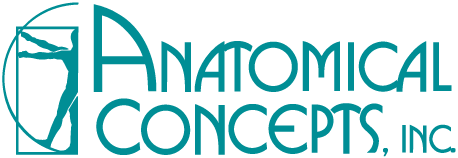.jpg?width=1200&height=628&name=ACI%20Dec23%20Blog%20-%20KAFO%20Social%20Option%20A%20(1).jpg)
Stroke is a devastating medical condition that can significantly impact your patient’s short-term and long-term mobility and quality of life. After surviving a stroke, many individuals face challenges in regaining their ability to walk and perform daily activities.
Did you know that Knee Ankle Foot Orthoses (KAFOs) can play a crucial role in stroke rehabilitation, aiding in gait recovery and helping patients regain their independence? In this blog, we will explore the benefits of KAFOs in stroke rehabilitation and how they can contribute to gait recovery for your patients.
Understanding Stroke and Its Impact
Stroke, often referred to as a "brain attack," occurs when there is a sudden interruption of blood flow to the brain, leading to brain cell damage. The consequences of a stroke can vary widely, depending on the severity of the event and the part of the brain affected.
Many stroke survivors experience weakness, paralysis, and difficulties with balance and coordination. One of the most significant challenges they face is relearning how to walk.
Role of KAFOs in Stroke Rehabilitation
Knee Ankle Foot Orthoses (KAFOs) are orthotic devices designed to support and stabilize the knee, ankle, and foot. These devices consist of a rigid frame that extends from the thigh to the foot and are custom-designed to fit each patient's unique needs. KAFOs play a crucial role in stroke rehabilitation for several reasons:
Stability and Support: After a stroke, many individuals have weakness or paralysis in their lower limbs. KAFOs provide the necessary stability to the knee and ankle joints, allowing patients to stand and walk with greater confidence.
Gait Correction: Stroke survivors often develop abnormal gait patterns, such as foot drop, spasticity, or a dragging gait. KAFOs help correct these issues by providing controlled movement and support, allowing patients to walk more naturally.
Fall Prevention: Balance and coordination issues are common after a stroke, increasing the risk of falls. KAFOs minimize this risk by offering stability and support, reducing the likelihood of injuries.
Promoting Muscle Strength: Through controlled resistance, KAFOs encourage muscle activation and strength development in the lower limbs, facilitating the rehabilitation process.
Benefits of KAFOs in Stroke Rehabilitation
Improved Mobility: One of the most significant benefits of KAFOs in stroke rehabilitation is the improvement in mobility. These orthotic devices enable stroke survivors to regain their ability to walk, which is a vital step in restoring independence and quality of life.
Enhanced Rehabilitation: KAFOs work in tandem with physical therapy and rehabilitation programs. They help patients perform exercises more effectively and facilitate the relearning of walking skills.
Reduced Strain on Caregivers: For caregivers and family members, assisting a loved one who has survived a stroke can be physically demanding. KAFOs reduce the need for constant assistance, allowing stroke survivors to become more self-reliant.
Psychological Benefits: Regaining the ability to walk independently has a profound impact on a stroke survivor's self-esteem and mental well-being. It can significantly boost their confidence and motivation for recovery.
Potential Applications
To illustrate the effectiveness of KAFOs in stroke rehabilitation, let's look at a couple of potential applications based on common situations:
Example 1: John, a 62-year-old stroke survivor, experienced significant weakness in his right leg after a severe stroke. With the help of a customized KAFO, he embarked on his rehabilitation journey. Over several months of diligent therapy and assisted walking with the KAFO, John gradually regained his ability to walk independently. The KAFO provided the necessary support to his weakened leg, allowing him to take confident steps towards recovery.
Example 2: Sarah, a 45-year-old woman, faced balance and coordination challenges following her stroke. Her physical therapist recommended using a KAFO to help her regain stability. With regular use and physical therapy, Sarah not only improved her balance but also experienced significant enhancements in her gait. The KAFO played a pivotal role in her remarkable recovery.
Stroke rehabilitation is a challenging journey, but Knee Ankle Foot Orthoses (KAFOs) offer hope for individuals looking to regain their mobility and independence. These orthotic devices provide stability, support, and assistance in correcting gait issues, making them invaluable tools in the recovery process.
With the right combination of rehabilitation, therapy, and the use of KAFOs, stroke survivors can look forward to a brighter, more mobile future.
To learn more about how ACI’s devices can help improve your patients’ recovery and long-term quality of life, visit our KAFO product page.
 330-757-3569
330-757-3569




